Horst Sauer
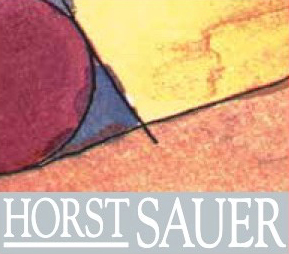
The Estate
Weingut Horst Sauer is famous in Franken and around the world for its exceptional dry, minerally wines, crafted by Horst Sauer alongside his daughter, Sandra. Horst is particularly devoted to his noble sweet wines, like his sublime, creamy Beerenauslese and Trockenbeerenauslese. Sandra Sauer joined the family business in 2004, bringing energy and momentum to the wine making process, as well as expertise in marketing. In 2006, their winemaking facilities were completely modernized in order to streamline their production. Today, they continue to produce internationally honored wines that are vastly enjoyable to drink.
Facts & Figures
Owners: Horst & Magdalena Sauer
Winemakers: Horst & Sandra Sauer (daughter of Horst)
Production Area: 37.3 acres
Vineyards: Escherndorfer Lump, Escherndorfer Fürstenberg
Soil: Shellbearing limestone, Lettenkeuper, loess silt
Grape Varietals: Silvaner, Müller-Thurgau, Riesling, Bacchus, Scheurebe, Spätburgunder, Domina, Weißburgunder
Annual Production: 140,000 bottles
*VDP Member (association of German premium wineries) since 2001
*Frank & Frei Member (cooperation of Franconian wineries)
The Vineyards
Große Lage-
Escherndorf am Lumpen: These plots are located on the steepest slopes of the Escherndorfer Lump—they are so steep, in fact, that they would be ideal for ski jumping. The soil is pure and planted with vines over 30 years old. “Am Lumpen” was first mentioned in 1655 in a description of goods and articles of association.
Erste Lagen-
Escherndorfer Lump: This exceptional site has been characterized by its special microclimate for more than a thousand years. The steep slopes open to the south like a parabolic reflector, collecting every sunbeam all year long and protecting the vines from the wintry northern and eastern winds. The combination of the slope angle, sun exposure, and surface layer of limestone-rich soil is unique. This terroir produces wines with a distinctive, concentrated fruitiness that enjoy great longevity.
Escherndorfer Fürstenberg: The Escherndorfer Fürstenberg borders the Lump to the east and west. The slope is orientated to the east, so the mountain is in the shade in the evening, which produces wines with green aromas and a fine, slender body.
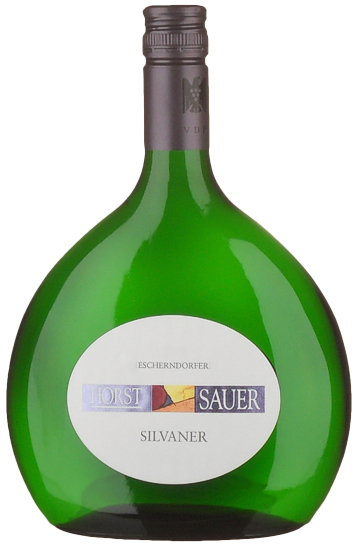
Silvaner QbA Trocken Escherndorfer
Appellation: Franken
Village: Escherndorf
Soil: Muschelkalk (shell limestone)
VDP Category: Ortswein
Grape Variety: Silvaner
Alcohol: 12%
Residual Sugar: 3.5 g/l
Acidity: 5.9 g/l
Tasting Notes: Pale yellow reflections in the glass. Refreshing aromas of ripe, green apples and quince. On the palate – enormous juiciness with light, fruity notes and a harmonious but still invigorating body.

Silvaner Just QbA Trocken
Appellation: Franken
Village: Escherndorf
VDP Category: Estate wine
Grape Varietal: 100% Silvaner
Soil: Loess and loam
Harvest: Manually done, and early–for this vintage, the harvest date was on September 15
Alcohol Content: 12%
Acidity Level: 6.2 g/L
Residual Sugar: 6.9 g/L
Vinification: Early harvest and fast yet gentle processing of the grapes is done to maintain the acidity, which is a very important characteristic of this vibrant and fresh wine. Gravity instead of pumping is used, cultivated yeast, 100% stainless steel tanks.
Tasting Notes: Aromas of pear and gooseberry on the nose. Vivid and refreshing on the palate.
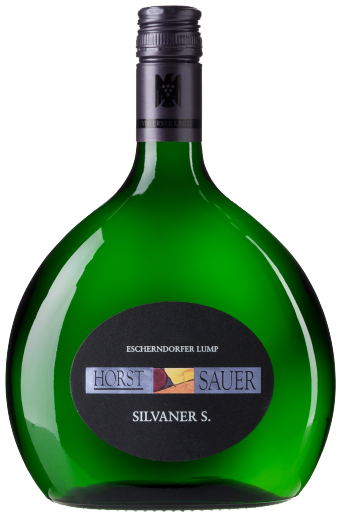
Silvaner S Erste Lage Escherndorfer Lump QbA Trocken BB
Appellation: Franken
Village: Escherndorf
Single Vineyard Site: Escherndorfer Lump
VDP Category: Erste Lage
Grape Varietal: 100% Silvaner
Soil: Muschelkalk (shell limestone)
Harvest: Manually done, and early–date of harvest for this vintage was September 20, 2015
Alcohol Content: 13%
Acidity Level: 6.2 g/L
Vinification: The grapes are processed very gently; gravity instead of pumping is used; cultivated yeast; slow, temperature-controlled fermentation; stainless steel tanks
Aging: On the fine lies for 4-5 months
Tasting Notes: Aromas of red apple and ripe pear in the bouquet; salty, stony notes on the palate from the Muschelkalk (shell limestone) soil; well-balanced acidity

Silvaner GG Escherndorfer am Lumpen 1655
Appellation: Franken
Village: Escherndorf
Single Vineyard Site: Escherndorfer am Lumpen
VDP Category: Großes Gewächs
Grape Varietal: 100% Silvaner
Soil: Muschelkalk (Shell limestone)
Harvest: Manually done
Alcohol Content: 13.5%
Acidity Level: 6.3 g/L
Residual Sugar: 0.8 g/L
Vinification: The grapes are hand-selected in the vineyard to ensure only ripe and healthy grapes are picked; gentle processing: gravity instead of pumping, gentle pressing, fining through sedimentation, spontaneous fermentation
Aging: On the fine lies until the end of July
Tasting Notes: Mineral aromas; very well-balanced acidity-to-alcohol ratio; on the palate, there is strong minerality, complexity, and profundity, as well as ripe notes of apple and pear.

Riesling GG Escherndorfer am Lumpen 1655
Appellation: Franken
Village: Escherndorf
Single Vineyard Site: Escherndorfer am Lumpen
VDP Category: Großes Gewächs
Grape Variety: 100% Riesling
Soil: Muschelkalk (Shell limestone)
Harvest: Manually done early in the season
Vinification: The grapes are hand-selected in the vineyard to ensure only ripe and healthy grapes are picked; gentle processing: gravity instead of pumping, gentle pressing, fining through sedimentation, spontaneous fermentation
Aging: On the fine lies
Tasting Notes: Mineral aromas; very well-balanced acidity-to-alcohol ratio; on the palate, there is strong minerality, complexity, and profundity, as well as ripe notes of apple and pear.
Alcohol: 13%
Residual Sugar: 4.0 g/l
Acidity: 7.5 g/l
Winzer Sommerach
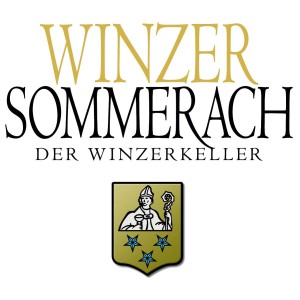
Philosophy:
The winemakers of Winzer Sommerach have had one credo which they have abided by since the winery was established in 1901: Unity is strength. At the beginning of the 20th century, 35 families, all steeped in viticulture for generations, came together out of economic necessity and founded Winzer Sommerach. Since then, a common vision has determined the path of these wine-growing families. After a series of bad vintages, a hitherto unknown disease of the vine, and a complete lack of marketing opportunities, the needy families were confronted with the choice to either abandon their vineyards, or to summon their courage and pioneering spirit, and with the help of a community never before seen in Franconia, create a better livelihood. Today we pay tribute to all the families out of respect, who, despite an uncertain future, have established the oldest wine cooperative in Franken. An imposing northward-facing stone gable from the old days continues to characterize the old town, reminding the winemakers of their roots, which informs their actions today. The winemakers of Winzer Sommerach are steeped in tradition, but at the same time, they are open-minded and innovative. The past is linked to the future at this winery. Fast-moving trends are passed over in favor of sustainable methods. Even if “genuine craftsmanship” sounds like a concept from the distant past, it perfectly describes the approach of the 90 winemaking families to their work, and is a guarantee of lasting success. This philosophy has passed from generation to generation, with an emphasis on quality craftsmanship, driving ambition to be among the best in the industry, and lastly, love of the work. This dedication to the art of winemaking is what makes the estate of Winzer Sommerach truly unique. The skill of the winemaker in conjunction with the terroir are responsible for the quality of a wine, and the winemakers are very grateful to be able to continue the work of their founding fathers with great potential for the future.
The Town of Sommerach:
The direct translation of Sommerach is “The place on the sunny side of the river.” As far back as the 11th century, the Sommeracher Wines were singled in documents of the time for their exquisite quality. Proud town houses and quaint half-timbered homes form a baroque, picture-book scenery. A few steps from the town center, one will encounter the imposing historic gables of the Winzerkeller, which impressively characterize the lifestyle and atmosphere of this picturesque village and its wineries. Almost every ancestral family in the village has a family-owned vineyard, and have over the generations preserved their wine-making knowledge and experience.
The Terroir:
The composition of the soil, the bedrock, the exposure, and the microclimate of a vineyard are just some of the natural factors which work together to produce an excellent grape harvest, resulting in unique wines that beautifully express their terroir. Of equal importance is the influence of the winemaker, who uses the knowledge that has been passed down to him or her from generation to generation.
At the bend in the Main River, the soils are formed from the weathering of the upper Muschelkalk (sedimentary rock strata) and are dependent on their location next to the Main River, but also on deposits of Flugsanden (very fine, wind-transported sand). In the Steigerwälder vineyards, the soil is characterized by Gipskeuper rock, which especially in Iphofen is permeated by gypsum layers.
The Grape Varieties:
Silvaner, Müller Thurgau, Riesling, Bacchus, Kerner, Scheurebe, Gewürztraminer, Rieslaner, Grauer Burgunder, Weißer Burgunder, Sauvignon Blanc, Schwarzriesling, Spätburgunder, Domina, Regent, Cabernet
The Vineyards:
Sommeracher Katzenkopf and Rosenberg, Escherndorfer Lump and Fürstenberg, Volkacher Ratsherr, Obereisenheimer Höll, Iphöfer Kalb, Wiebelsberger Dachs, Kammerforster Teufel, and Oberschwarzacher Steige
Sommeracher Katzenkopf
Katzenkopf (“cat’s head”), the most famous Sommeracher vineyard, is south facing and rises gently toward the horizon. The combination of the unique microclimate and special soil together make the vineyard one of the best of the Franken Rebstandorte, giving its wines positions on the leaderboards of national and international wine tastings. At the heart of the Katzenkopf is probably the best section, the Wilm and Gewann, which still refer to the winery as Kösterei and which is mentioned in a deed from the year 1084. The Bamberg provost Ulrich gave the Münsterschwarzach Monastery some vineyards in Sommerach, an event which provides documentary proof that Katzenkopf has been the land of excellent wine for centuries. Depending on where you are in the mountains, the thickness and composition of the ground varies above the sedimentary rock strata, or “Muschelkalk.” At the foot of the slope, the soil is light, deep, and marked by the sediment of the Maine River. This part of the vineyard is ideal for aromatic wines, especially the Traminer, which is planted at the point in Katzenkopf where the valley is at its narrowest. In the middle of the slope the base is weaker, and the easily heatable marly clay soil is permeated by a limestone skeleton. Above all, this area offers excellent local conditions for complex Silvaner, but the soil also gives the Burgundian varietals a tense filigree and a special mineral character.
The wines from the Katzenkopf are enchanting with their juicy flavors of yellow fruit, luster, and length with a mineral core which makes the wines durable and viable. These characteristics are alluded to in the “Historical Statistical Descriptions of Hochstift Würzburg” from 1802: “… in this country are the best wines of Escherndorfer, Eivelstädter, Randersackerer, Sommeracher and the famous Callmuth ..” All these wines have “this particular quality that it has good length and will always get better with time.”
Escherndorfer Lump
Breathtakingly steep, almost dizzying, the rows of vines grow behind the village of Escherndorf from the valley up to the highest point. The Lump frames the winegrowing village like a concave mirror and, by its clear southern exposure, fully catches the sun’s rays to advantage. The location is marked by a fertile, slightly deep marly limestone clay, which is penetrated by sedimentary rock. There, the Riesling and the Silvaner vines find a comfortable home. The wines from the Lump are always characterized by a particularly rich finesse, straightforwardness, nerve, depth, and mineral elegance. A great Lump takes time! After one to two years maturity, the nose reaches absolute perfection.
Wiebelsberger Dachs
Gentle hills rise in a small microclimatic niche behind the village. Surrounding the vineyard are the forests of the Steigerwald Nature Park which protect the vines from cold winds. Wiebelsberger Dachs has a southward facing situation on the vast Frankish plain. In winter, when all the surrounding hills are still covered in snow, it is always impressive to see the snow begin to melt when the sun shines on the slope of the Dachs. The silty clay of the Dachs’ soil was formed by the weathering of the lower Gipskeuper rock. The ground is hard, but rich in nutrients and has great storage capacity for moisture which is necessary for the long, dry summer months. This soil produces concentrated, aromatic grapes that are small and golden yellow in color, and are harvested from nearly thirty years old Silvaner vineyards. The red wine varietal, Domina, also finds its home in Dachs which produces deep, dark, expressive grapes. The wines from the Wiebelsberger Dachs are identifiable by their typical Keuper spice, a flavor that is reminiscent of herbs and moist soil; they are full-bodied, muscular, and have a pronounced aromatic depth.
Iphöfer Kalb
A stone’s throw away from Schwanberg are the somewhat steep slopes about Iphofen on the southern end of the Steigerwald ridge. The Iphöfer Kalb is characterized by a gravelly shalestone clay that was formed by the weathering of the Gipskeuper rock. Unique to this vineyard are the gypsum lumps; these come from naturally occurring gypsum deposits which at first glance call to mind white marble. The soil is permeated by a gritty stone skeleton and at the steepest parts of the slope, the vines require several years for the roots to take hold and make their way through the stone layers. In the steep, leaner areas of Kalb, the winemakers have planted Riesling, while the gentler and deeper plots are excellent locations for Silvaner and Domina. The Gipskeuper gives the Kalb wines the characteristic Steigerwälder aromas, as well as a fine elegance and minerality.
The Families and their Vineyards
90 families currently manage 196 ha of vineyards. 10 families live mainly on the estate with their vineyards. As for the remaining families, wine production is a secondary occupation for them and offers an important additional source of income in this rural region.
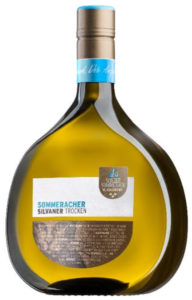
Silvaner QbA Trocken
Grape Variety: Silvaner
Quality Level: Deutscher Qualitätswein – ORTSWEIN
Alcohol: 12.5 % vol.
Residual Sugar: 3.4 g/l
Acidity: 6.1g/l
Tasting Notes: Fresh and light-bodied, marked by the mineral qualities of the shell limestone soil. Aromas of pear and apple.
Food Pairings: Fish and shellfish, white meat, asparagus.
Cellaring: 2-3 years
Serving Temperature: 7 -10° C
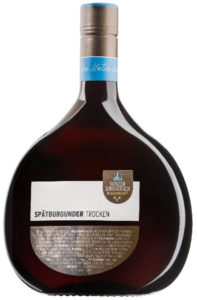
Sommeracher Katzenkopf Spätburgunder QbA Trocken
Grape Variety: Pinot Noir
Quality Level: Deutscher Qualitätswein – GUTSWEIN
Alcohol: 13.0 % vol.
Residual Sugar: 2.4 g/l
Acidity: 4.5 g/l
Tasting Notes: Dry on the palate with soft tannins and notes of black cherries. Good structure and a velvety texture.
Food Pairings: Roast duck breast with red cabbage, wild game, and aged hard cheeses.
Serving Temperature: 15-18° C
Cellaring: 3-4 years
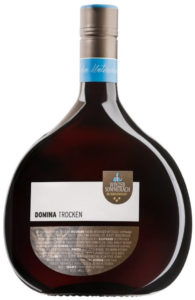
Sommeracher Katzenkopf Domina QbA Trocken
Grape Variety: Domina
Quality Level: Deutscher Qualitätswein GUTSWEIN
Alcohol: 13.0% vol.
Residual Sugar: 1.7 g/l
Acidity: 4.7 g/l
Tasting Notes: Cherries in the foreground. Fascinating berry flavors, full and soft, with perfectly integrated tannins.
Food Pairings: Wild game, braised beef, pizza, and pasta.
Cellaring: 3-4 years
Serving Temperature: 15-18° C

Weissburgunder Saint Valentin QbA Trocken
Overview: The grapes for the Winzer Sommerach Weissburgunder come from the Valentin vineyard, named after the protectors of Sommeracher winemakers.
Quality Level: Qualitätswein
Grape Varieties: 100% Pinot Blanc
Alcohol: 11.5%
Vinification: Fermentation takes place in stainless steel tanks at low temperatures.
Tasting Notes: A refreshing wine with scents of elderflower, citrus fruit, and melon. The fruity notes are also reflected on the palate, complemented by a fine minerality and a fresh finish.
Food Pairings: Delicious with fish, poultry, veal, ham, melon, and asparagus.
Serving Temperature: 7 – 10°C

Grauburgunder Trocken Familiengewächs
Overview: The “Familiengewächs” or “Vintners’ Signature” Grauburgunder bears the names of the winemaker families who have been a part of this cooperative since 1901.
Quality Level: Qualitätswein
Alcohol: 12.5%
Residual Sugar: 4.2 grams / liter
Acidity: 6.5 grams / liter
Serving Temperature: 7-10 °C
Cellaring Potential: 4 – 5 years
Tasting Notes: Quince fragrance and a delicate honey note, beautiful fruit & refreshing minerality.
Food Pairings: An all-rounder that goes well with grilled fish as well as pasta dishes.



